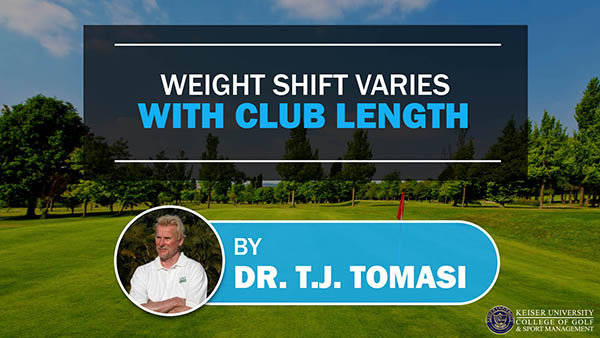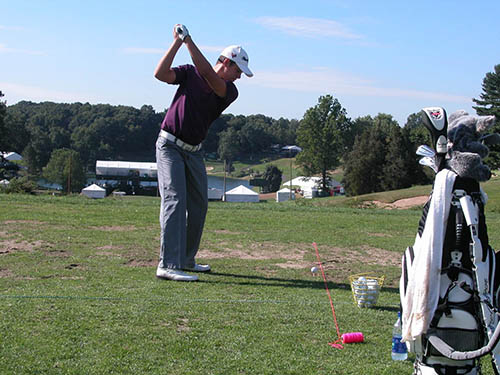Weight Shift Varies with Club Length

By Dr. T. J. Tomasi, Keiser University College of Golf Senior Faculty and Director of Research
One of the non-negotiables for a full power swing is weight transfer (a more accurate term for which is pressure transfer), i.e., you must be in your front hip coming back to the ball. Of course, you can hit the ball while hanging back on your trail side, but too often, you’ll catch the ball fat or thin. When you go to the opposite extreme — no weight transfer at all — you’re condemned to a weak slap at the ball.
So, how much weight are we talking about, and how do you move it around? Some golf teachers believe that if the weight is, say, 60 percent on the front foot and 40 percent on the back with a medium to short iron, then the torso turns away from the ball without changing the 60-40 ratio. During the downswing, a percentage of the back weight shifts so that at impact, you now have about 90 percent of your weight on your front side. I call this the “coil-no shift” method.
Other teachers recommend that if you start 60-40 at the top, you should have shifted weight, so the trail side now houses the majority of weight; i.e., there has been a significant change in the distribution at the top. This is the “coil-and-shift” method.
Although it varies with differences in body type, balance, flexibility, the mix of fat vs. muscle, etc., I have found that when customizing a student’s weight transfer, the following rule applies: Use the coil-no shift method for short, accuracy shots, like the medium and short irons, and the coil-and-shift for the long power shots, like the driver.
Studies have shown that the non-negotiable is satisfied when the majority of the weight is on the target side through impact and that for maximum power and accuracy, weight should be actively transferred from your trail side during the downswing. Exactly how much depends on a combination of many factors, with the operative word being “combination.” The guidepost is: the number does not guide the performance; instead, the performance guides the number.
This is why you need a good swing clinician who can customize your swing protocol based on your individual characteristics and preferences. Trying to do this yourself is the first step down the road to perdition.

With the driver, tour pro Aaron Baddeley has a noticeable weight shift to his rear foot prompted by a big torso coil. While you might think you can max out your coil and not shift your weight, force-plate studies show that you can’t — without ruining your swing.

With a shorter iron, because accuracy is the key, Baddeley keeps his lower body quiet using the coil-no shift method, in which the majority of the weight stays on the front side at the top of the swing.
If you’d like to study with Dr. Tomasi and other PGA Master Professionals, contact The College of Golf today.














